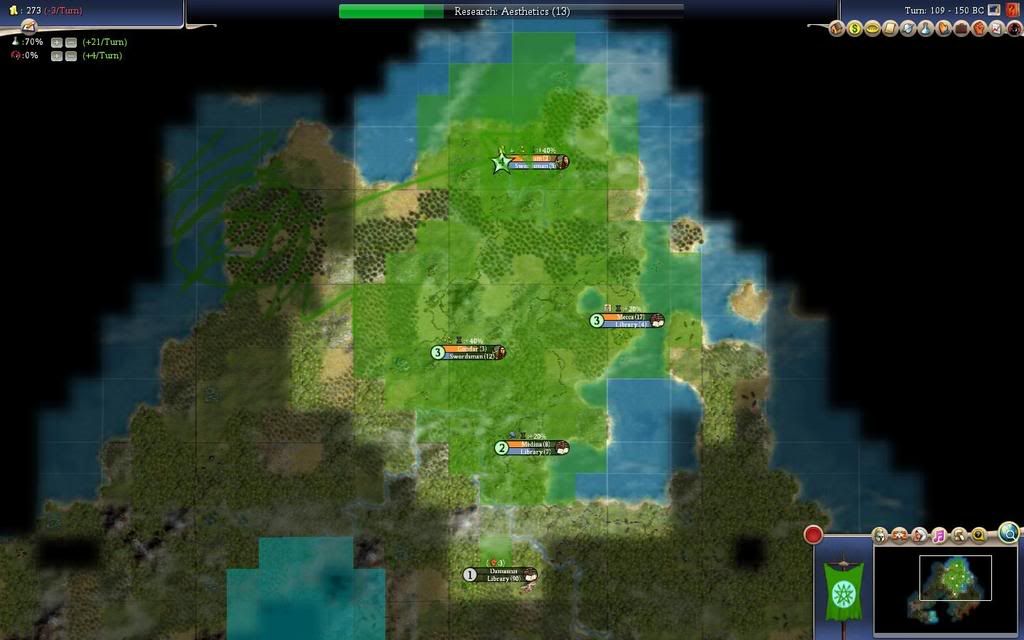futurehermit
Deity
- Joined
- Apr 3, 2006
- Messages
- 5,724
I started a new game with Ethiopia. I was just messing around since I was frustrated with my poor play tonight.
So I did something kind of crazy.
I was annoyed that I got a coastal start and I decided to move inland.
Ok, that's not too crazy.
But then I didn't find a spot that I liked so I kept going and going until I spotted Saladin on the opposite coast.
I decided I would settle an ok coastal spot just North of him and then build my 2nd city to his W effectivly forcing him to settle to his S...very predictable expansion.
I got a little luck in that iron showed up for my 2nd city spot.
Here is the result:

I tried to circle where my capital originally was and drew an arrow to where I moved it to. The result is a nice-sized early empire nicely bunched together (as opposed to if I had marched across the map to attack him from my original capital position) = low maintenance.
I also have a bunch of land around my original capital that can now be settled peacefully.
With two financial civs on the continent and losing a bunch of early turns, I have naturally fallen a bit behind on techs. But with a couple lightbulbs I will be right in the thick of things. I'm also considering trying to generate a GSPy to steal a few techs to get back to parity.
What do you think?
EDIT: I am considering putting the palace in Saladin's capital to further balance maintenance costs and am currently teching to lit to put the GL in his capital. It is high-food so will be perfect to help me do some lightbulbing to get to astro and lib and tech parity with the two financial civs (hannibal and mayans)
So I did something kind of crazy.
I was annoyed that I got a coastal start and I decided to move inland.
Ok, that's not too crazy.
But then I didn't find a spot that I liked so I kept going and going until I spotted Saladin on the opposite coast.
I decided I would settle an ok coastal spot just North of him and then build my 2nd city to his W effectivly forcing him to settle to his S...very predictable expansion.
I got a little luck in that iron showed up for my 2nd city spot.
Here is the result:

I tried to circle where my capital originally was and drew an arrow to where I moved it to. The result is a nice-sized early empire nicely bunched together (as opposed to if I had marched across the map to attack him from my original capital position) = low maintenance.
I also have a bunch of land around my original capital that can now be settled peacefully.
With two financial civs on the continent and losing a bunch of early turns, I have naturally fallen a bit behind on techs. But with a couple lightbulbs I will be right in the thick of things. I'm also considering trying to generate a GSPy to steal a few techs to get back to parity.
What do you think?
EDIT: I am considering putting the palace in Saladin's capital to further balance maintenance costs and am currently teching to lit to put the GL in his capital. It is high-food so will be perfect to help me do some lightbulbing to get to astro and lib and tech parity with the two financial civs (hannibal and mayans)

